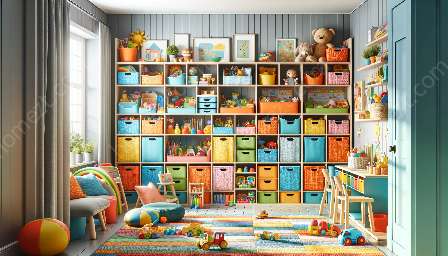Teaching kids about toy organization is an important skill that can help children learn responsibility, become more independent, and keep the home tidy. Engaging children in the process of organizing their toys can also introduce them to the concept of home storage and shelving in a fun and practical way. In this comprehensive guide, we'll explore creative and effective methods for teaching kids about toy organization, and how to make the process both educational and enjoyable.
Importance of Toy Organization for Kids
Understanding the importance of toy organization is the first step in teaching kids about this valuable skill. By keeping their toys organized, children can learn to take care of their belongings, develop a sense of responsibility, and cultivate good organizational habits that will benefit them throughout their lives. Additionally, a well-organized play area can help children feel more comfortable and productive during playtime.
Engaging and Interactive Learning Methods
When teaching kids about toy organization, it's essential to make the process engaging and interactive. One effective method is to turn toy organization into a game or a fun activity. For example, you can create a color-coded system for sorting toys or use labels with pictures to help kids identify where each toy belongs. This approach makes the process more exciting for children and encourages them to participate actively in keeping their toys organized.
Introducing Home Storage and Shelving
As kids learn about toy organization, it's an excellent opportunity to introduce them to the concept of home storage and shelving. You can involve children in choosing storage solutions such as toy bins, shelves, or storage cubes. This not only teaches them about different storage options but also empowers them to make decisions about their space. Additionally, kids can learn about the importance of maintaining a clutter-free home and how proper shelving and storage solutions can contribute to a tidier living environment.
Practical Strategies for Toy Organization
Teaching kids about toy organization involves practical strategies that are easy for children to understand and follow. One effective approach is to involve children in the decluttering process. Encourage them to identify toys they no longer use or need, and discuss the option of donating them to children in need. Sorting toys into categories and assigning specific storage spaces for each category can also make the organization process more manageable for kids.
Creating a Personalized Organizational System
Every child is unique, and their organizational preferences may vary. Allowing children to create a personalized organizational system for their toys can promote a sense of ownership and independence. Kids can use their creativity to decorate storage containers, design labels, or come up with unique organization methods that reflect their personalities. This personalized approach not only makes toy organization more enjoyable but also fosters a sense of pride in maintaining a tidy and organized play area.
Teaching Responsibility and Independence
Teaching kids about toy organization goes beyond keeping toys tidy. It also instills valuable life skills such as responsibility and independence. By involving children in the organization process and giving them ownership of their play space, they learn to take responsibility for their belongings and become more independent in managing their environment. These skills will carry over into other aspects of their lives, contributing to their overall development and well-being.
Encouraging Consistent Maintenance
Consistent maintenance is key to successful toy organization. It's essential to teach kids about the importance of putting toys back in their designated places after playtime. Setting up regular routines, such as a quick organization session at the end of each day, helps children develop the habit of maintaining an organized play area. Consistency in maintaining toy organization ensures that the benefits of this skill are sustained over time.
Conclusion
Teaching kids about toy organization is a process that can be both educational and enjoyable. By emphasizing the importance of organization, introducing creative and interactive learning methods, and involving children in the decision-making process, kids can develop valuable organizational skills while maintaining a tidy and functional play area. Moreover, this approach also introduces them to the concept of home storage and shelving, laying the foundation for good organizational habits that will benefit them throughout their lives.


